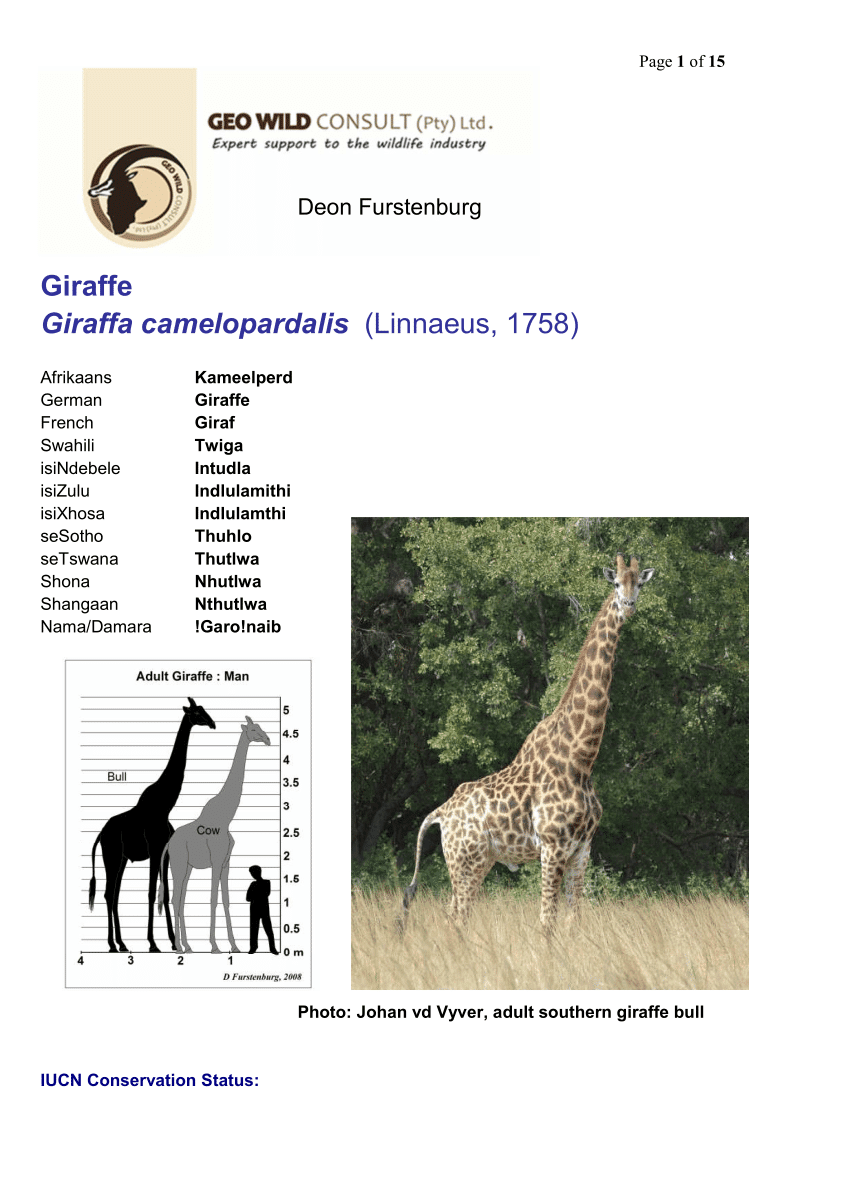
All information about giraffes: habitat, behavior, physiology, species features and interesting facts
The giraffe is the second tallest (after the elephant) African animal with a unique color and a unique shape of spots, which can easily do without water longer than a camel. Giraffes live mainly in savannahs, open steppes with a small number of trees and shrubs, the leaves and branches of which are eaten.
Giraffes are incredibly peaceful creatures that live in small herds of no more than 12-15 individuals. Each handsome spotted loves other members of his herd and respects the leader, which is why animals almost always manage to avoid any skirmishes and conflicts.
If a fight is inevitable, giraffes arrange bloodless duels, during which rivals come close to each other and fight with their necks. Such a fight (mainly between males) lasts no more than 15 minutes, after which the defeated retreats and continues to live in the herd as an ordinary member. Males and females also selflessly protect the offspring of their herd, especially the parents, who without much thought ready to pounce on a pack of hyenas or lionsif they threaten the lives of babies.
In nature, the only animal dangerous to the giraffe is the lion, and the only relative is the okapi, since all other giraffes are considered extinct.
Contents
The uniqueness of the behavior and physiology of giraffes
Of all mammals, the giraffe is the owner of the longest tongue (50 cm), which helps to absorb up to 35 kg of plant food daily. With a black or dark purple tongue, the animal can also clean its ears.
Giraffes have very sharp eyesight, and their huge growth additionally allows them to notice danger at a very long distance. Another African animal is unique in that he has the biggest heart (up to 60 cm long and weighing up to 11 kg) among all mammals and the highest blood pressure. The giraffe differs from other animals in the size of the step, because the length of the legs of an adult is 6-8 meters, which allows it to reach speeds of up to 60 km / h.
Giraffe cubs are no less unique – an hour after the birth, the babies are already quite firmly on their feet. At birth, the height of the cub is approximately 1,5 m, and the weight is about 100 kg. 7-10 days after the birth, the baby begins to form small horns that were previously depressed. The mother looks for other females with newborns nearby, after which they arrange a kind of kindergarten for their offspring. At this time, the kids are in danger, because each parent relies on the vigilance of other females, and cubs often become prey to predators. For this reason, only a quarter of the offspring usually survive to a year.
Giraffes only sometimes sleep lying down – most of the time the animals spend in an upright position, put their heads between the branches of trees, which almost completely eliminates the possibility of falling, and sleep standing up.
Curious facts about giraffes
- This animal is a pacer. The forelimbs of a giraffe are much longer than the hind ones, so the animal moves with an amble, that is, it alternately brings the front legs forward, and then the hind legs. Thereby animal running looks rather strange and clumsy, since the front and hind legs constantly cross, while the speed of the giraffe reaches 50 km / h. Moreover, during a fast run, the head and neck of the animal sways and the tail most often dangles, which makes the gallop even more ridiculous and funny.
- The first name of the spotted handsome man was “camelopardalis” (from the words “camel” (camel) and “pardis” (leopard)), since he reminded Europeans of a camel in his manner of movement, and a leopard in his spotted color. In 46 BC. e. Julius Caesar brought the first giraffe to Europe, and already in modern times (1827), the Arabs transported an animal named Zarafa (“smart”), thanks to which the modern name “giraffe” appeared.
- The color of each representative is unique, inimitable and can be compared with human fingerprints.
- There are five-horned giraffes. On the top of each animal there is a pair of blunt short horns, in some individuals a third horn also appears on the forehead. Moreover, on the back of the head of these animals there are many ligaments and neck muscles, which can grow so much that they form two additional horns.
- Spotted beauties have an unpleasant pungent odor that protects them from parasites, and a large amount of antibiotics contained in the skin prevents the appearance of abscesses and the spread of harmful bacteria.
- Animals in question can go without water longer than camels thanks to the unique physiology and juicy food.
- In the infrasonic range, giraffes are able to silently communicate with members of their own species. The researchers were able to record the sounds made by giraffes with a frequency below 20 hertz, and in dangerous situations they can also bellow and roar loudly.
- The tail hairs of an animal are about 10 times thinner than a human hair.
- African beauties females give birth while standing. A newborn flies about two meters to the ground and is not injured at all when falling. Immediately after the birth of the baby, the spots on the head, under which the cartilage is hidden, can determine its gender.
- A case was recorded when, during a jump on a giraffe, a lion missed and was subjected to a powerful blow to the chest. A national park worker was forced to shoot the hoofed animal, whose chest was crushed.
- People have long been engaged in uncontrolled hunting and killing animals for tasty meat. In addition, tendons were used to make ropes, strings of bows and stringed musical instruments, original bracelets and threads were made from tail tassels, and the skin served as the main material for creating fairly strong shields, whips and drums. Now in nature, these amazing creatures are found only in national parks and reserves. Giraffes are one of the few animals that feel great in captivity and regularly produce offspring.
- Most of all, animals are at risk at a watering hole, when they clumsily bend and do not have time to escape when attacked.
Other “giraffes”
- The constellation Giraffe (derived from the Latin “Camelopardalis”) is a circumpolar constellation that it is best to observe on the territory of the CIS countries from November to January.
- The Giraffe piano (derived from the German “Giraffenklavier”) is one of the varieties of vertical piano beginning of the XIX century, getting its name due to the silhouette, reminiscent of the animal of the same name.
The giraffe is a surprisingly intelligent animal with unique habits that are characteristic only of him. Peacefulness, meek disposition and funny appearance of these animals will not leave indifferent any person.





